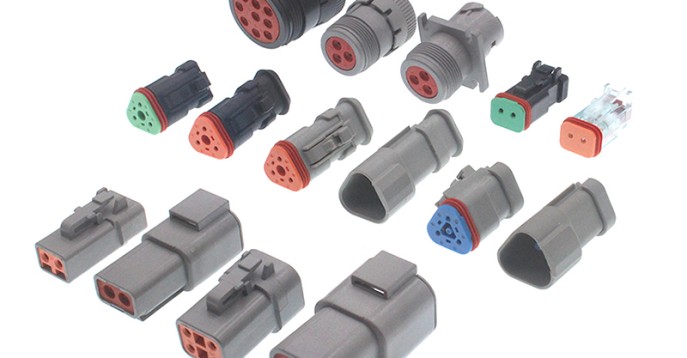With the development of society, car users have higher and higher requirements for car configuration, and customized cars will become the future development trend. However, there must be a variety of parts in customer customization, and the wiring harness, as a separate individual part in the car, connects all the electrical appliances in the car, and needs to meet different functional configurations. With the continuous increase of the new four modernizations and the configuration of electronic appliances, the complexity of the wiring harness has also increased rapidly, showing the characteristics of “less base and more changes”. If the automotive wiring harness is designed according to the traditional model, there will be many problems such as long change cycle, high production pressure, and many types of inventory.
Wire Harness Modular System Development
● Principle of Automotive Wiring Harness Modular System
The wiring harness module is composed of different modules, and the wiring harness assembly is broken up into wiring harness structures (modules) related to each function, and each function is composed of a module. A main harness can be decomposed into semi-finished component modules, and the different modules maintain their relationship through the connectors of module C. The wiring harness can be divided into basic modules, functional modules and optional modules according to requirements
Modular harness system development and manufacturing, also known as KSK, is the abbreviation of German (Kunden-Spezifischer Kabel), which originally means Customer-Specified Cable. The specific implementation of wire harness modularization involves design splitting, pricing, testing, logistics pull, final assembly, etc., and requires multiple systems.
In the design and production stage, the OEM uses the PowerB2O (Business-2-Organization) system to split the wiring harness assembly into different modules, splits the design for each module, and uses the UC (UsingControl) constraints of the relevant characteristics to carry out the module. constraint. The supplier conducts modular production according to different modules provided by the OEM. When the OEM’s complete vehicle production order is broadcast or the body is online, the OEM will send the vehicle information and the information carried by the wiring harness category according to the configuration of the vehicle production order.
The module sends the order information to the supplier through the EDI (Electronic Data Interchange) system. After the supplier receives the order configuration requirements of the OEM, the different modules that have been produced are configured and combined, and finally the wiring harness assembly is formed.
According to the pre-agreed lead time, the supplier will deliver the wire harness after production. Each wire harness must have a separate material box and print the corresponding label. When the OEM receives the wire harnesses produced by the supplier, when scanning the code to receive the goods, it will search for empty positions according to certain strategic requirements, and notify the material personnel to place them. When the whole vehicle enters the final assembly, the wiring harness sorting action is triggered, the wiring harness used by the vehicle is found according to the vehicle number, and the logistics personnel are notified to pick up the goods and send them to the sorting area for sorting.
When the whole vehicle is offline, the settlement action is triggered. According to the wiring harness module used by the whole vehicle, the usage of a single module is generated, and the information in the settlement state is released to the supplier platform, which is convenient for suppliers to issue and settle invoices. Finally, the supplier checks the settlement information on the platform to form the corresponding billing basis.
The principle of modular splitting
● The principle of module splitting is: first, ensure that the module covers all configurations of the vehicle; secondly, the modules are clearly divided according to configuration or function, and no loops or repeating loops can be omitted; finally, redundancy can be made when necessary to reduce the types of modules.
In the early stage of the development of the wiring harness, the modules must be clearly divided, and then each part is divided into different modules. At present, the vehicle electrical modules are divided into two types according to the function of the parts: basic modules and functional modules.
● The basic module, also known as the mandatory module, is unique and has the highest priority. The parts in the basic module are mandatory for all models, and these parts do not contain multiple configurations. At this time, the wiring harness drawing should have only one basic module, which is shared by all models.
The basic module generally includes multiple modules such as body control module (BCM), grounding module, and anti-theft module (IMMO). The functional module contains a variety of optional modules. The functional modules are divided into transmission module (AMT/MT), CAN network module (high configuration CAN / low configuration CAN), ABS module (ABS / ESP), reversing image module, electric rearview mirror module, window breaker and other modules. These functional modules are further divided into mandatory functional modules (such as transmission module, ABS module) and optional functional modules (such as reversing image module, electric rearview mirror module), among which mandatory functional modules have higher priority than optional functional modules. functional module. Required module means that no matter what the vehicle configuration is, one of the sub-configurations of the required module must be selected; optional module means whether these modules need to be determined according to the customer’s choice, if the customer chooses the configuration of the optional module, the sub-module of the functional module required, otherwise not required.
After the modules are divided, set the selection rules for the basic modules, required function modules and optional function modules in advance in the system. If the selected modules are repeated or omitted, the system will report an error, which is beneficial to the wiring harness multi-module situation. Check back to reduce the chance of module errors.
After the module is determined, the plastic parts, terminals, connectors, etc. on the wire harness are divided, and each sub-part should have certain attributes. Especially for the connectors shared by different modules, they are generally divided according to the number of holes, and the connectors are classified as modules with a large number of holes.
Wire Harness Development Verification Strategy
The accuracy of the modules after the wiring harness is matched is too large to be 100% fully verified by physical objects. Therefore, the following strategies are generally adopted in each verification link.
● Virtual verification: With the assistance of special design software, simulate and analyze the feasibility of each module collocation. The advantages are short time and low cost. The disadvantage is that the unexpected situation of the actual production process of the wire harness cannot be predicted.
● System verification: Select several wiring harness assemblies such as high, medium and low configuration to confirm the feasibility of the wiring harness module. The advantage is that it can simulate real vehicle verification, but the disadvantage is that only some vehicles can be verified, and it cannot ensure that all configured vehicles are verified. Considering the cost, cycle and other aspects, most of the modular wiring harnesses are verified by this method.
● Real vehicle verification: verify the option strategy with the same system to ensure that the wiring harness assembly on all test models covers all modules. The advantage is that you can ensure that the various configuration vehicles are verified, and the verification is sufficient. The disadvantage is that there are many vehicles required, long verification period and high cost.














